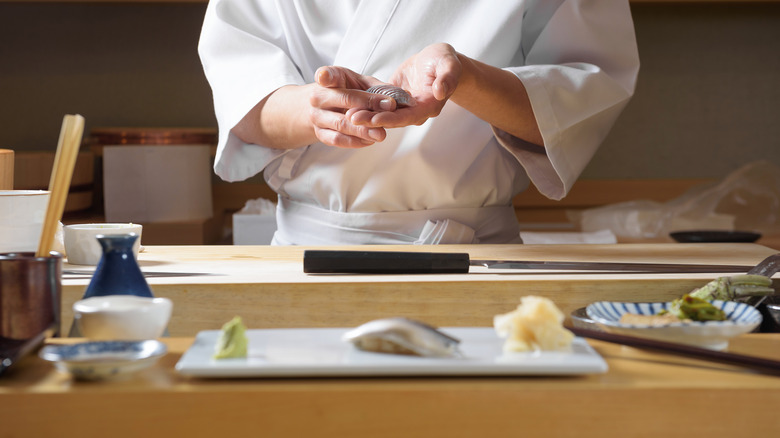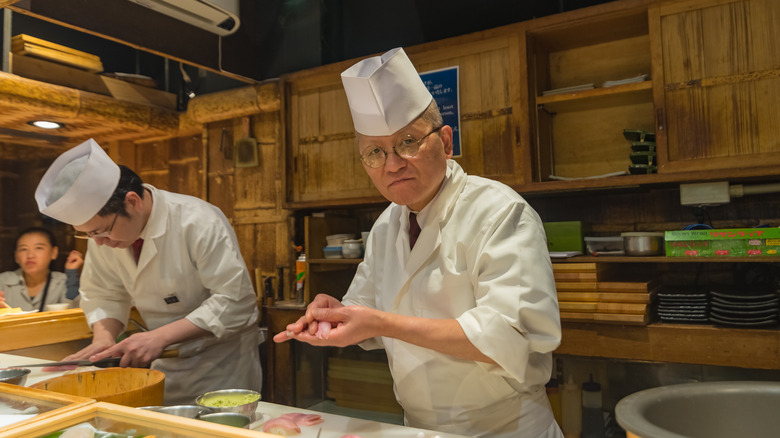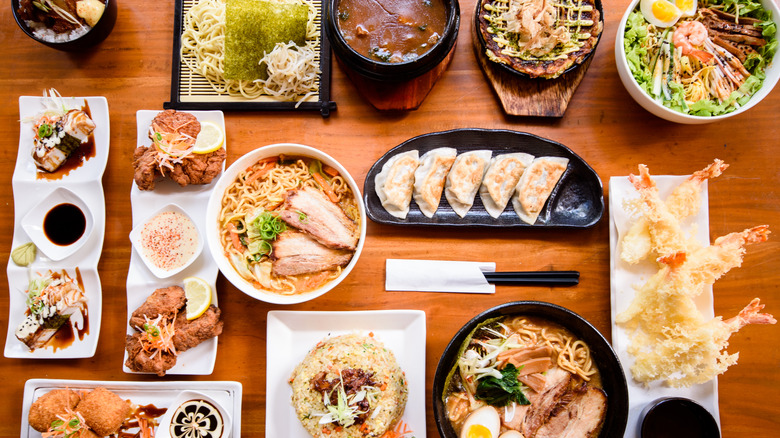The Ephemeral Meaning Of Dining Omakase
Trip Savvy reports that dining in Japan can require its own rule book to keep everything straight. Chopsticks should go no higher than your mouth and should be set down when you're speaking. Kobe Jones adds that knowing where to sit, and how to properly hold your glass are also signs of respect when dining with others in Japan.
There may be no realm where this etiquette is more heavily applied than in kaiseki. According to Michelin Guide, kaiseki menus may sometimes simply be set menus, but at the highest level, the kaiseki is a hautè cuisine experience of the highest order. The menu is designed by the chef to take advantage of local and seasonal foods at their peak flavor. It also makes use of the "power of five". This principle helps guide the chef to include multiple colors, cooking styles, and all five flavors (especially umami) to create a unique dining experience for their guests.
If kaiseki sounds too intimidating though, there is another style of set menu dining in Japan that can be more approachable known as omakase.
What is omakase?
One of the most unique dining experiences available in Japan or Japanese restaurants is omakase. According to Michelin Guide, omakase literally means, "I leave it up to you." By arranging an omakase experience or ordering omakase at a sushi restaurant, you are putting yourself in the hands of the chef. This can result in a variety of different experiences depending on the personal style of the chef.
As Live Japan points out, omakase isn't necessarily going to be the same as the "osusume" which is more akin to what's recommended by the restaurant. The same focus on seasonality from the kaiseki will be present, but it might not be as formal. Michelin says at times omakase can be a set menu, but it can also be a personalized experience where the chef is tracking what you like and dislike to adjust the following courses and create a unique experience for every group of diners.
Live Japan adds that this tradition is a fairly recent cultural invention that was born out of the rising lower classes of the 1990s. Omakase was invented for these social climbers that had never set foot in a sushi restaurant before to save face. Leaving the ordering up to the chef allowed them to keep their inexperience a secret, and still have a great meal. It isn't limited to sushi though, and can also be a set dinner or lunch.
What to expect from omakase dining
Omakase dining will always be a unique experience by its very nature. Michelin points out that different chefs enjoy the experience for different reasons, and so will change their omakase to suit that. One thing to keep in mind though is that omakase may not have a set price. That means that leaving yourself in the hands of the chef may result in a staggeringly high check at the end of the meal.
MasterClass adds that you may not like everything you eat, but that's all a part of the fun. Omakase is often an intimate experience with a chef that takes place in a private dining room or counter. The chefs will likely challenge your taste buds and will be eager to hear what you have to say. Sushi Modern says that the chef may even be watching you closely as you eat to measure your reaction. Constructive feedback can also help the chef to understand your tastes, and modify the later courses to properly satisfy your personal preferences.
It might not be for everyone, but those that are ready to have a unique dining experience should seek out a restaurant that offers omakase, and leave their meal up to the chef.


